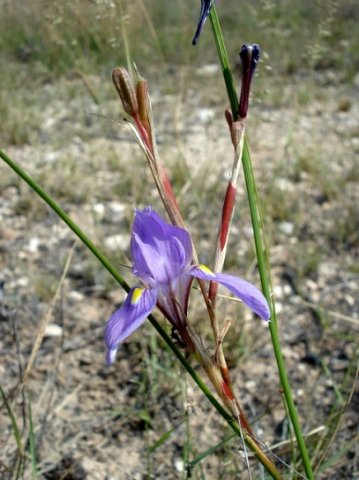Moraea polystachya

Author: Ivan Lätti
Photographer: Judd Kirkel Welwitch
Moraea polystachya, commonly known as the Karoo iris and in Afrikaans as the kraai-uintjie (crow nutgrass) or the bloutulp (blue tulip or tulp), is a deciduous perennial that grows annual aerial parts to heights of around 80 cm. The corm grows to 4 cm in diameter, covered in a dense net of tough dark fibres. The tuft of roots below the corm is contractile, i.e. they pull the corm deeper into the soil, as far down as 30 cm, adding to its protective underground positioning.
One to five long, narrow leaves grow annually from this corm. They range between 20 cm and 70 cm in length and up to 1 cm in width. The leaves sheath the flowering stem.
The species distribution is in the east of the Western Cape, the east of the Northern Cape, the west of the Eastern Cape, the west of the Free State and the south of North West; also in Namibia.
The habitat is stony slopes and flats in arid scrub and renosterveld. The habitat population is deemed of least concern early in the twenty first century.
Abundance of the poisonous plant usually indicates overgrazing (Vlok and Schutte-Vlok, 2015; Manning, 2009; Vahrmeijer, 1981; iNaturalist; http://redlist.sanbi.org).

